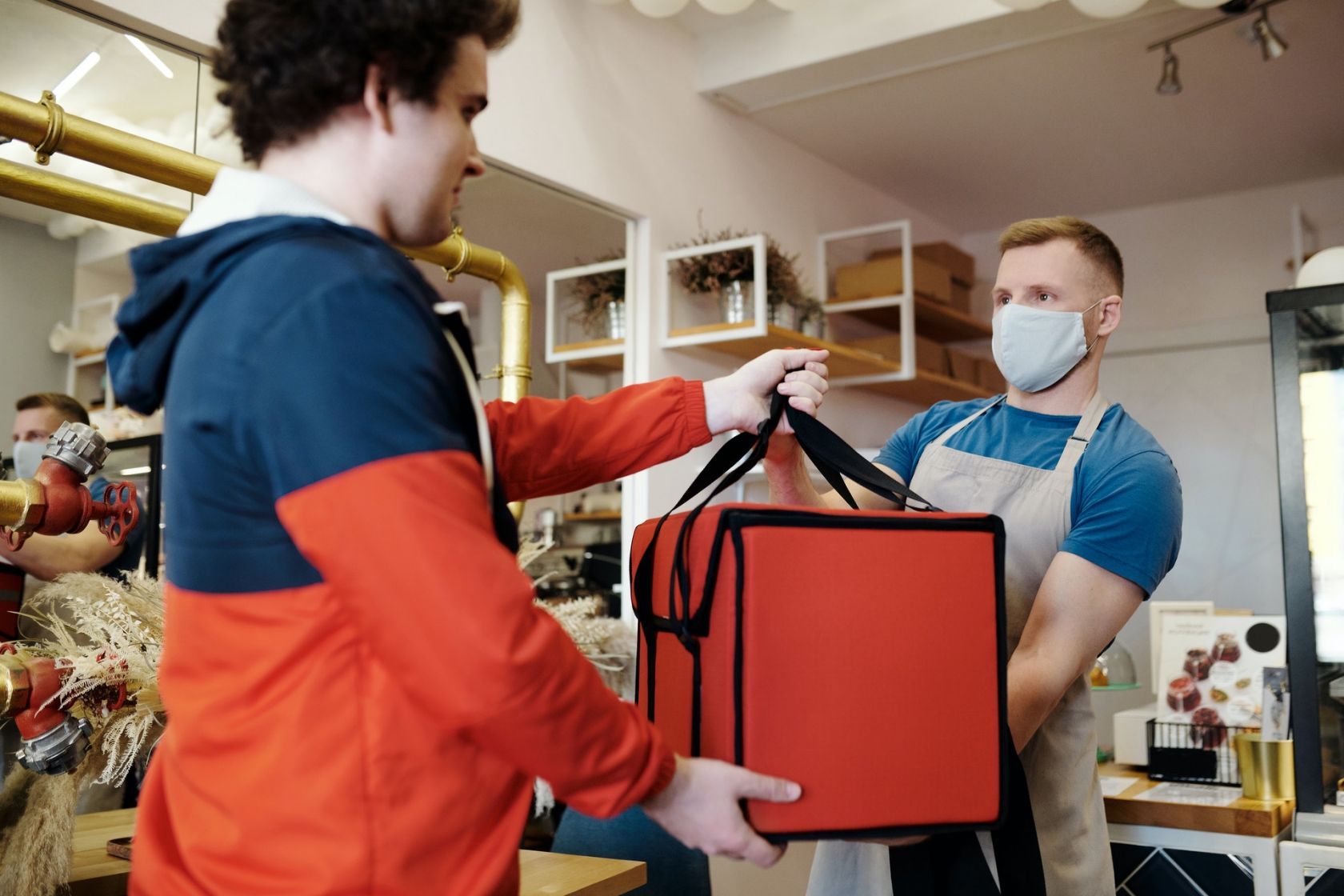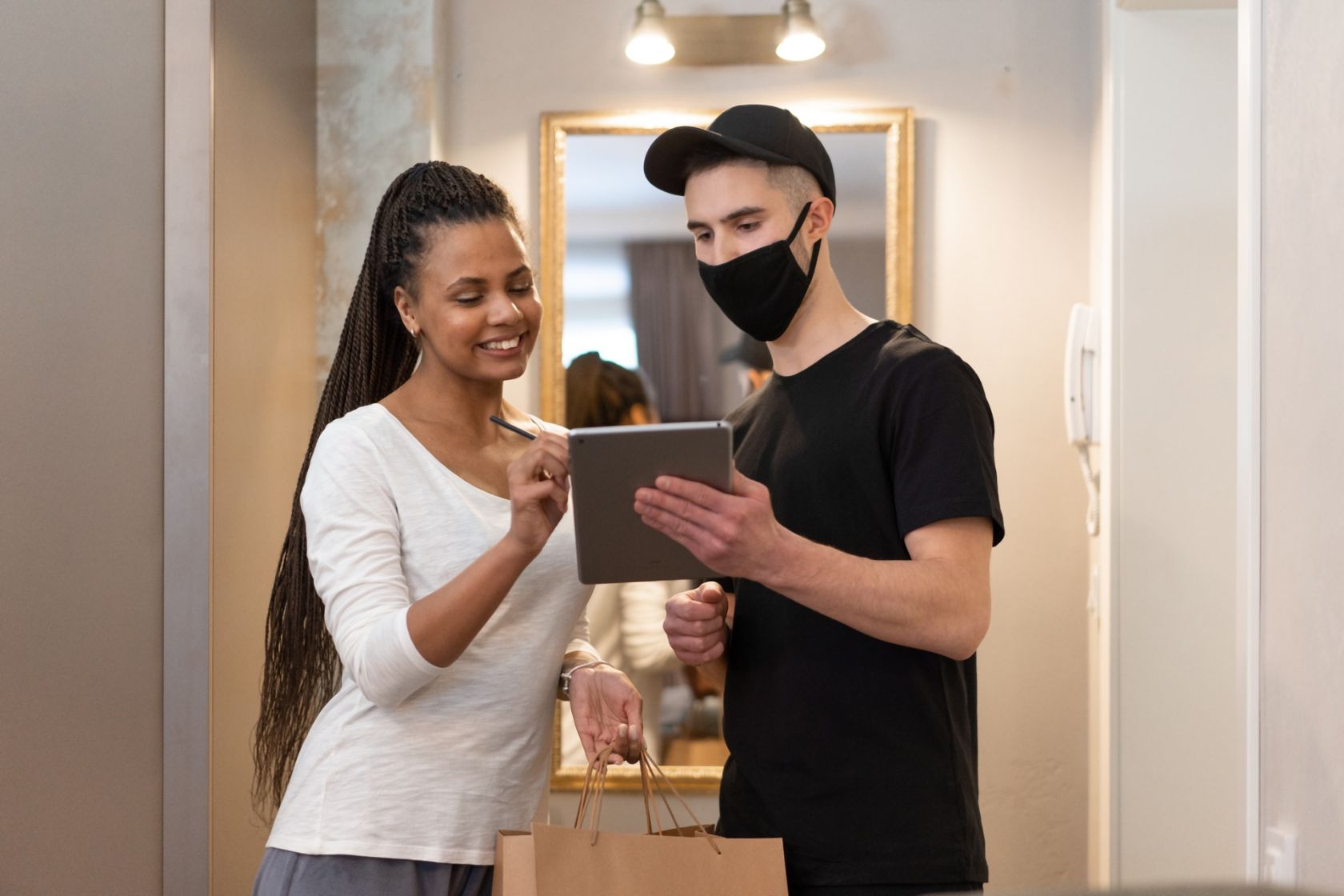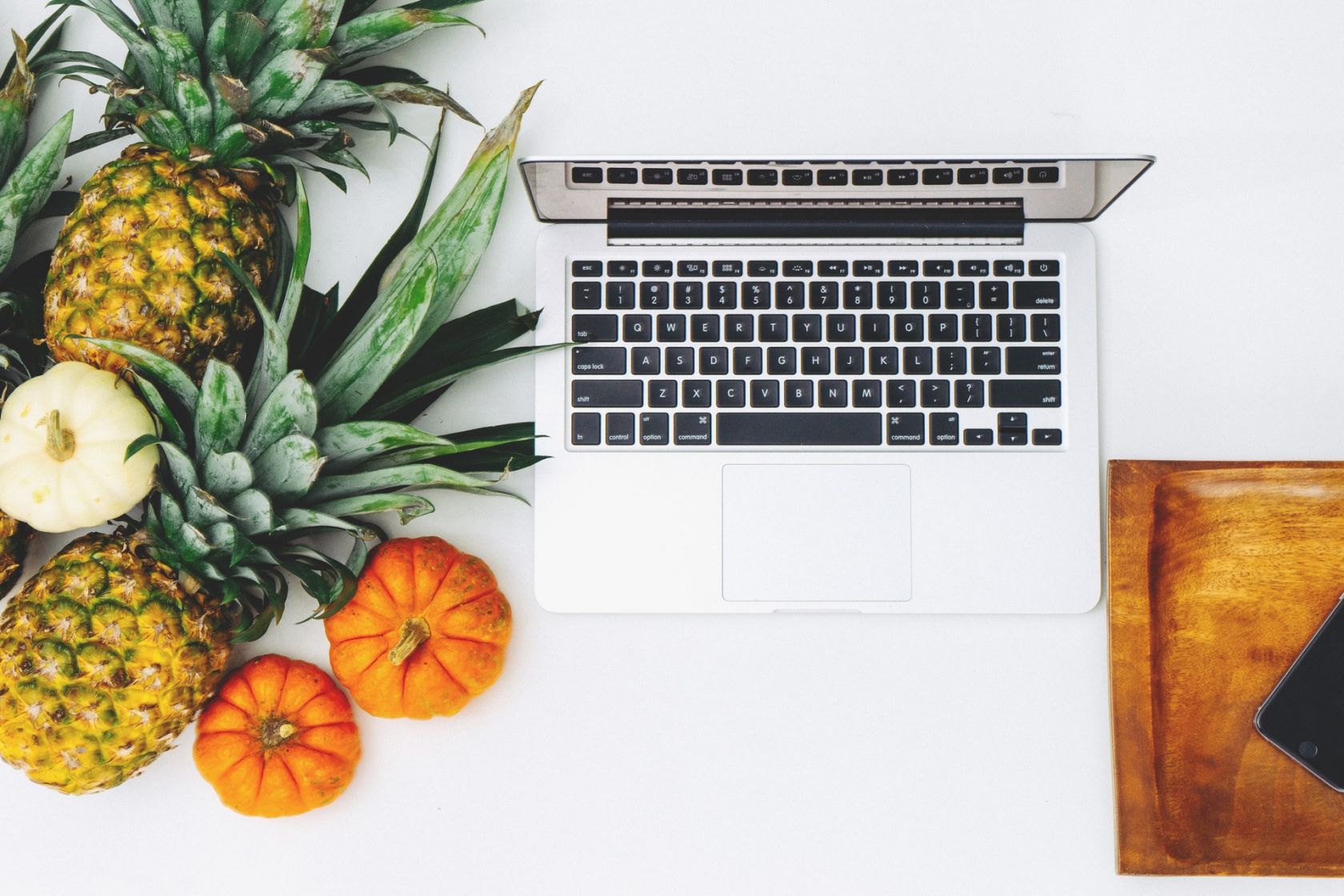The pandemic's impact and expansion of digital space drastically changed online business behavior. Turnovers are growing, and more people use online delivery services. Jeff Bezos's and Mark Zuckerberg's companies have increased their worth by around 60 billion during the first quarter of 2020. Why? One of the primary reasons was the delivery logistics organization as an effect of increased demand. Other companies also begin to act upon customers' high interest in online commerce, especially in the food sector. As a consequence, app development services are getting lots of attention even from smaller companies.It makes a lot of sense as businesses get a powerful instrument like CRM for food delivery to manage their relationships with clients and efficiently coordinate the orders.
How Do Delivery Apps like DoorDash Work
Delivery App is software that gives the customer the ability to order food from their mobile device. The application could be native, meaning it could operate on a specific device requesting its features like images, GPS data, contacts, camera, and other information. For instance, an application built with Swift would run only on iOS devices, while an application built with Kotlin would be compatible with Android devices only. You may choose to go with a hybrid app for a cross-platform option, but native apps give you better performance and more unique features specific to the platform you choose.
The principle behind the digital instrument is simple. Users log in to the app, choose the products they like, add them to the basket, specify the delivery information, and place the order. Besides the client-facing interface, there are courier-facing and seller-facing sides of the application.
The seller can see what services are ordered and begin preparation for the delivery. Courier sees the order, estimated preparation time, pickup, and final destination location. The order info gets uploaded to the drivers' dashboard, and any available drivers close to the pickup location can take on the delivery. Such software allows for organized order manipulations and streamlines the logistics processes associated with the last-mile delivery.
The apps of this kind get the demand they deserve:
- It's trustworthy - only qualified companies get into the partnership network of the app. They get tested by the standards of the organization.
- The app is intuitive - each user can understand and navigate the interface and features.
- The app is convenient - anyone can make an order from a favorite food place and get it in a matter of not just hours but minutes without, all without leaving their homes.
- The app solves a lot of tasks for both businesses and customers, reducing the risk for mistakes, idle times, and additional expenses associated with the work organization processes.
Having a convenient application for food delivery is enough for a business to achieve a new level in terms of the customer base and operational performance. Geographical data manipulations become more accessible because there's a network of multiple food locations.
Before creating a delivery app, there must be a specific list of features and technologies selected for the development. We need to conduct proper market research to identify the competitors, needs, and opportunities within a particular niche of business we are working with.
Features and Roles Within a Food Delivery App
The app's success directly depends on how easy it is to use the app and what features it includes. It is essential to make an instrument that won't just communicate to customers but make the communication convenient and more useful for all parties involved. Wezom is a software development company that specializes in food delivery applications. We pay close attention to the interface design and UX aspects of applications. Our goal is to make the app intuitive and available for everyone.
The main goal is to make a powerful and effective digital instrument. To make this happen, we approach this individually, depending on the business's needs. Our business analysts thoroughly investigate the niche, the competitors, and the target audience and dive deep into the company's operational processes. Based on the information gathered, we create a task plan. From there, the development process of the future tool begins, which includes the selection of tech and the development of the codebase for the final product.
Food delivery app development is individual because the scope and the number of features for each module could be anything. A standard set of features that nearly every delivery app contains the following:
- A personal account for customer, courier, company, and other parties that use the app;
- A product catalog that displays the products with descriptions that the business is offering for sale;
- A loyalty program that encompasses some forms of bonus systems to encourage the customer to use the app more;
- Filtering and searching tools to find the items;
- A wish list and an order bucket to add items a customer wants to order in the future;
- Integrated payment systems like PayPal, Zelle, debit/credit cards, or any other form of payment for the transactions;
- Notification system to communicate the status of the order to the customer or any other relevant parties;
- Rating system to provide feedback on the services or products provided;
- Saving filters option for instant search of the favorite items or restaurants;
- Instruments for the scheduled deliveries to deliver items within a specific timeframe;
- Category and section filters for the ease of navigation;
- The ability to add certain items to the favorites section for quick access in the future;
- Delivery visualization tools with status indications to keep the customer aware of the current delivery stage;
- Functionality for specifying the delivery locations, conditions, and other information in regards to where and how the delivery must be performed.
These are some of the features a delivery app could have. As it was mentioned, it all depends on the needs and specific tasks a business needs to accomplish. Our team has the only principle - we make the most practical tools that improve the business' performance.
IKURA is a large food delivery company located in Ukraine for whom we created a delivery app. The peculiarity of the client is that the company only offers its services through deliveries. Therefore, having a digital tool to communicate with a customer was a necessity. With time and great effort, we were able to digitize the company entirely. The app we created allows us to automate nearly every stage of the supply chain, drastically reducing order processing time while improving customer service. Previously, the customers were getting notifications through messenger. Now, everything is happening through the app.
How Does the Development of Delivery Apps Look Like and What Kind of Tech Is Involved
To make an efficient and powerful delivery app, there must be a thoughtfully structured plan. The development process revolves around a technology stack that is individually selected.
For web applications, developers often use HTML5, CSS3, JavaScript, TypeScript, Angular, React, Vue, etc. For iOS product development, there are technologies like Swift 5, Objective C, AppCode: iOS SDK, or Cocoa Touch. For Android applications - Kotlin, Java: Ubuntu, Android Studio. All these technologies are used for the front-end development, which is a client-oriented side of the application.
Backend technologies are used for the server-end side, which encompasses the logical interconnection of the feature, database storage and retrieval processes, and communication to the front-end parts. Ruby, Elixir, Python, PHP, Java, and others use some backend programming languages. These are used along with the frameworks such as Ruby on Rails, Laravel, Phoenix, web-servers like Nginx, Apache, and database services like MySQL and PostgreSQL.
Next, the API gets involved. API is an interaction protocol for the communication between the server-end and client-oriented parts. The API integrations are different depending on the application. For payment systems, the companies often use API Braintree, Stripe, or PayPal. For social networks - Facebook, Instagram, Twitter. Google Maps API keys are used for route planning; MailChimp or Twilio for email marketing. API allows turning practically any feature idea for the app into reality.
The technology stack is all fun and games; however, there are specific guidelines and rules for app development. Wezom suggests the following:
Analyze the Market
Investigate the competitors and evaluate the market's size and the demand for any relevant products. It is essential to understand your client because this is the end-user for the future application you are making. What jobs does it accomplish for the customer? How will it generate revenue? Our business analysts are the people taking care of this part by collecting the information, determining the demand, and understanding the weak and strong points of the competitors. This information will help us formulate specific tasks and goals and see how the application will extend the business.
Understand the Business Model and Develop a Monetization Strategy
Creating a delivery app is just half of the work. It's essential to determine ways for monetization so that you can profit from it. By the end of the day, this is the core of any business' existence. For example, you can create a discount for any user using the app for the first time. It may seem that the company is just lowering the value of its products or services. Still, it brings more people to use the app, increasing the total revenues and boosting the customer's loyalty level. Additionally, you can monetize the app, promote other services, start partnership programs, and get into e-commerce. Think your monetization strategy through.
Prioritize the Features
At Wezom, we make products that scale along with your business. You can add new features, integrations and expand your capabilities. Therefore, it is essential to think about the foundational set of instruments to expand upon. First, all the vital features must be selected, make predictions, and estimate its demand. The service must satisfy all the client's demands. The more needs we meet, the more features we add; consequently, app development becomes pricier. Therefore, the client and the team must define the priorities.
Test The Product
You don't have to create a complete product. You can start with a minimum viable product (MVP) to test your hypotheses on your current clients. Now, you know what the customer likes and doesn't like, which is a lot of valuable information considering your plans to expand the app and test it on the cold audience.
Think About The Support
After you launch your app, you will encounter various earlier unidentified problems, and it is normal. We do everything we can to minimize such situations, but let's face reality, no one can predict the market with 100% accuracy. Therefore, it's essential to provide proper support for the app to update and improve the features that work. When your customers start using the app, you will find some features the customers want to use, but it wasn't implemented. This is a perfect opportunity to add it and release an update.
Don’t Forget About Offline Interaction
Developing a great food delivery app is crucial, but it's important to remember physical reality and interactions. You need to define the logic of how the couriers will perform the work, organize order management, create partnerships with suppliers and intermediaries, promote the band and the product using marketing channels, attract new customers and perform a lot of other operational tasks. Remember that the app is a multiplier of your success.
These recommendations will guide you through creating your digital product that will stand out from the competition, attract new users, increase loyalty, retain existing customers, and evolve your business.
The Costs of Food Delivery App Development
The development price of an effective delivery app depends on a variety of parameters. These parameters are:
- Platform selection: you can choose to make a enterprise mobile application on iOS, Android, or both; or you can decide to pair it up with a robust e-commerce website;
- The number of user interfaces; the more roles you wave within the app, the more complex and pricier the development becomes;
- Features integration: each new instrument with a particular set of features is a weighty price factor;
- The design quality: the developers focus on unique interface specifications, design consistency, and how it resembles the spirit of your brand;
- External systems integrations: these include third-party payment services, marketing tools, security services, image processing tools, and more.
The cost directly depends on more than 40 individual factors. The main one is the development time. The more complex your project is, the more time and specialists you need to turn it into reality. We select a dedicated team of certain specialists depending on the product needs. They will be working on your project and will keep you updated on the development process. You will control it and specify if any adjustments need to be made. On average, the development costs for a food delivery app start from $10,000. The exact costs spent on the list of parameters specified earlier are identified during initial discussions with the client. If you have an idea you want to implement into business processes or make your own product from scratch, we recommend you call or email us for further consultation. You can also come to one of our offices; we organize a personal meeting and select the best set of solutions specific to your requests. Let's build an innovative digital solution together.


